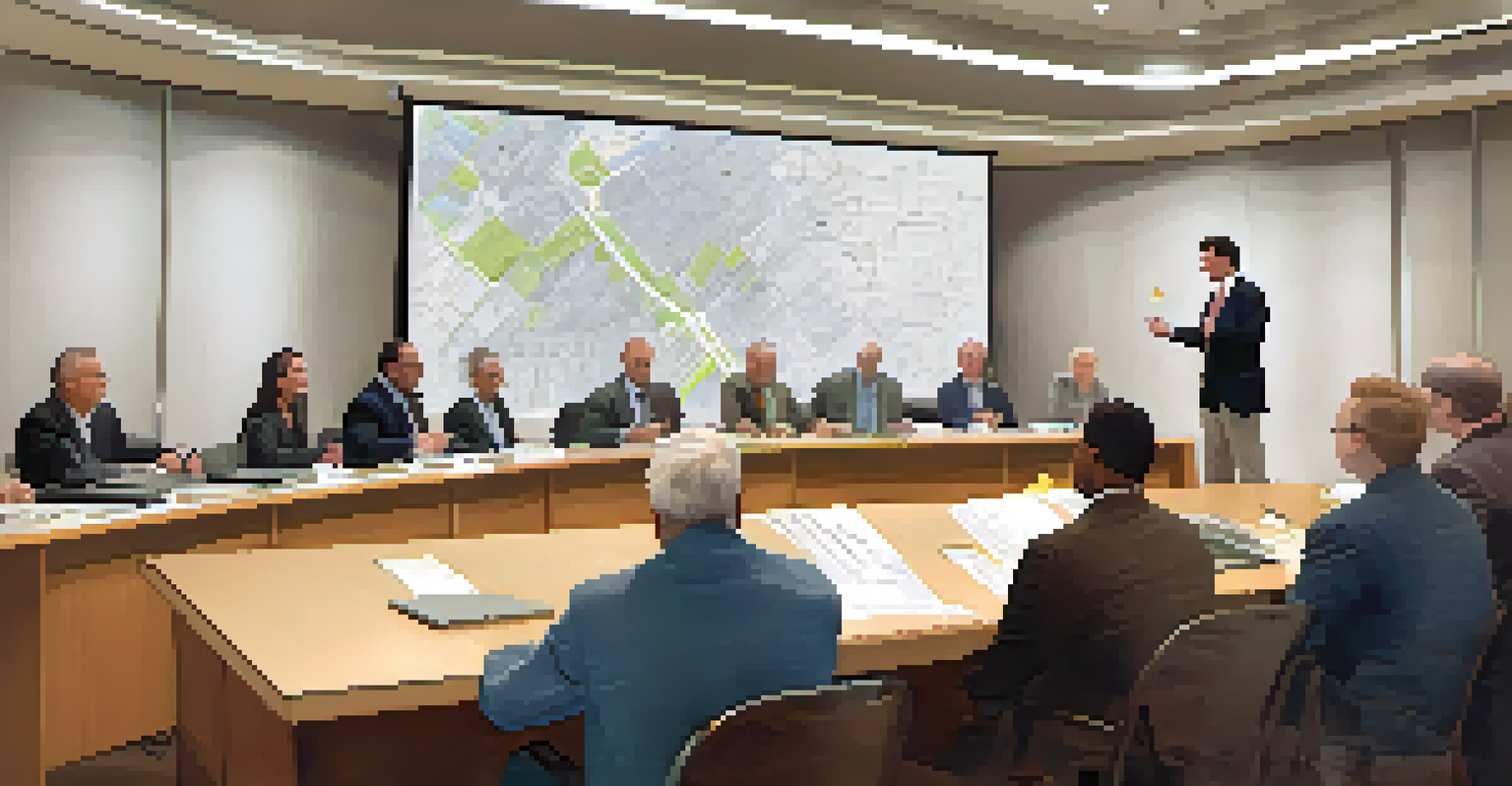Zoning Laws in Colorado: Implications for Developers and Residents

What Are Zoning Laws and Why Do They Matter?
Zoning laws are regulations that govern how land in a specific area can be used. They define what type of buildings can be constructed, how tall they can be, and what activities can occur on a property. For residents, these laws can protect neighborhood character and property values, while for developers, they dictate the feasibility of new projects.
Good zoning is about balancing the needs of the community with the needs of the economy.
In Colorado, zoning laws can vary significantly from one municipality to another, reflecting local priorities and community needs. For instance, a city might prioritize residential development, while another might focus on commercial growth. Understanding these laws is essential for anyone looking to buy property or develop in the state.
Moreover, zoning laws can have implications beyond just property use. They can influence local infrastructure, environmental protection, and even social dynamics within communities. Therefore, grasping the basics of zoning can empower both residents and developers to navigate the landscape more effectively.
Types of Zoning: Residential, Commercial, and Industrial
Zoning laws typically categorize land into different types, with the most common being residential, commercial, and industrial. Residential zoning is intended for housing, ensuring that neighborhoods maintain a certain aesthetic and density. On the other hand, commercial zoning allows for businesses and services that can enhance local economies.

Industrial zoning is focused on areas designated for manufacturing and heavy industry, often accompanied by stricter regulations due to potential environmental impacts. Understanding these categories helps developers identify suitable locations for their projects while allowing residents to voice concerns over compatibility with their living environment.
Zoning Laws Shape Community Growth
Zoning laws regulate land use, influencing everything from neighborhood character to property values.
In many cases, zoning classifications can evolve over time, reflecting changes in community needs or economic conditions. This adaptability allows cities in Colorado to respond to growth and development trends, but it also presents challenges as residents may face shifts in their neighborhoods that could alter their quality of life.
How Zoning Laws Affect Property Values
Zoning laws play a crucial role in determining property values within a community. Properties in well-planned, zoned areas are often more desirable, as they provide predictability regarding future development and land use. For example, a neighborhood zoned for single-family homes may retain higher property values compared to one where high-density apartments are allowed.
Zoning laws are the rules of the game in real estate development, shaping the landscape of our communities.
Conversely, changes in zoning can negatively impact property values. If a residential area becomes zoned for commercial use, existing homeowners might find their peaceful surroundings disrupted by new businesses. This potential for change can lead to anxiety among residents, making them more engaged in local zoning discussions.
Additionally, investors and developers closely monitor zoning regulations, as favorable zoning can lead to lucrative opportunities. Understanding these dynamics is essential for both residents wanting to maintain their property values and developers looking to invest wisely in Colorado's diverse real estate market.
The Role of Local Governments in Zoning Regulations
Local governments in Colorado are responsible for implementing and enforcing zoning laws. This can involve creating comprehensive plans that outline how a community intends to grow and develop over time. These plans are often shaped by public input, allowing residents to have a voice in their community’s future.
City councils and planning commissions play significant roles in reviewing zoning proposals and making decisions that can affect the built environment. This means that developers must engage with these local bodies to navigate the approval process effectively, often presenting their plans in public hearings to gain community support.
Types of Zoning Impact Development
Different zoning classifications—residential, commercial, and industrial—dictate the types of buildings and activities permitted in an area.
Moreover, local governments can amend zoning laws to adapt to changing conditions, such as population growth or shifts in economic demand. This flexibility is vital for ensuring that communities remain vibrant and responsive to the needs of their residents and businesses.
Navigating the Zoning Approval Process
The zoning approval process can be complex, often requiring developers to submit detailed plans and applications to local authorities. This includes site plans, environmental assessments, and sometimes even traffic impact studies. Each of these components helps local governments evaluate the potential impacts of proposed developments.
Residents also play an important role during this process, as they are typically invited to provide feedback during public hearings. This community engagement can lead to modifications in proposals or, in some cases, outright rejections based on local concerns. For developers, understanding how to effectively communicate with residents can be just as crucial as understanding the zoning laws themselves.
Navigating this process successfully requires patience, preparation, and often, collaboration. Developers who take the time to engage with the community and local officials are more likely to secure the necessary approvals and create projects that benefit everyone involved.
Common Zoning Challenges for Developers
Developers in Colorado often face a range of challenges when it comes to zoning. One common issue is dealing with restrictive zoning laws that may not align with their project goals. For example, a developer wanting to build affordable housing might encounter zoning that only permits single-family homes, limiting their options.
Another challenge is the potential for community opposition. Residents may voice concerns over increased traffic, changes in neighborhood character, or environmental impacts. This opposition can stall projects or lead to costly modifications, making it essential for developers to anticipate and address these concerns early in the planning process.
Community Input is Crucial in Zoning
Local governments encourage resident feedback during the zoning approval process, ensuring that community concerns are addressed.
Additionally, navigating the maze of local, state, and federal regulations can be daunting. Developers must stay informed about zoning amendments, environmental laws, and building codes to ensure compliance. Understanding these complexities is crucial for successful development and long-term project viability.
Future Trends in Zoning Laws in Colorado
As Colorado continues to grow and evolve, so too will its zoning laws. Emerging trends include a focus on sustainability and smart growth, as communities look for ways to balance development with environmental stewardship. This might involve revising zoning laws to encourage mixed-use developments or preserve open space.
Another trend is the increasing demand for affordable housing, prompting local governments to reconsider traditional zoning practices that may hinder such initiatives. By allowing for higher density or alternative housing types, municipalities can address housing shortages while accommodating growing populations.

Moreover, technology is playing a role in how communities approach zoning. Digital platforms are making it easier for residents to engage with local planning processes, providing feedback and accessing zoning information. As these trends continue to shape Colorado, both developers and residents will need to stay informed and adaptable to navigate the changing landscape.